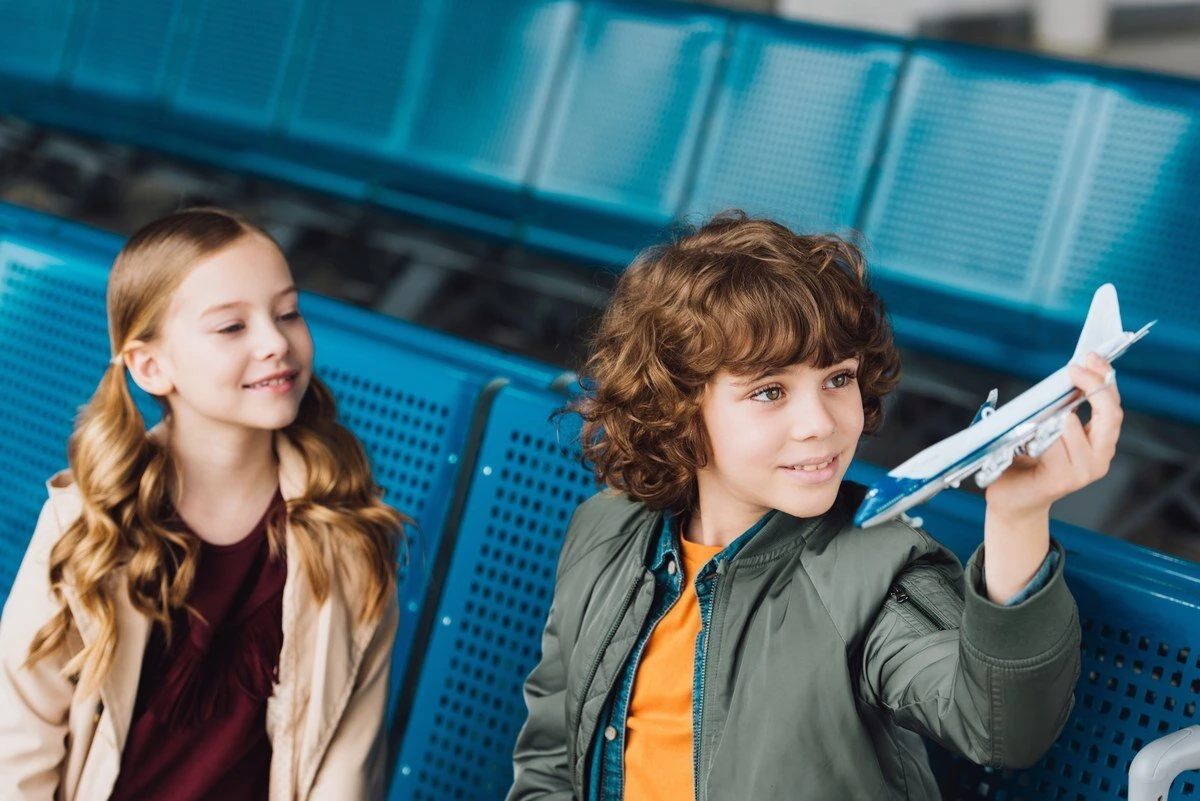How to keep children occupied during flights and stopovers?
Travelling by plane with children can quickly become a real challenge if you're not prepared. Between impatience, boredom, tiredness and space constraints, children sometimes find it hard to enjoy their plane journey with peace of mind, and stopovers don't help matters either. However, with a few simple, well-thought-out tips, it's possible to turn these moments into pleasant and even playful interludes.
Anticipating for better travel
Even before the day of departure, it's essential to think of the trip as a family adventure, not an obstacle. Good preparation helps to defuse critical moments.
Prepare a goody bag
One of the best ways to keep children occupied during a flight is to offer them a specially prepared "goody bag". This bag can contain :
- Small magnetic board games or travel games.
- Figurines or small cars.
- Stickers and a notebook.
- Age-appropriate books.
- A colouring book with a few pencils.
The effect of surprise will make each new object even more attractive, and the fact that the items are brought out in dribs and drabs will keep the interest alive throughout the journey.

Download content in advance
Tablets and smartphones can be invaluable allies, provided they are used sparingly and in a targeted manner. Before your flight, we recommend that you download :
- Age-appropriate cartoons and films.
- Audio stories or podcasts for children.
- Educational and fun applications that work without a connection.
The aim is to offer a variety of content to avoid content fatigue.
Pack smart snacks
The meals offered on board are not always suited to the tastes of the youngest passengers. It's a good idea to pack a few reassuring snacks that are easy to carry and eat without causing damage: cereal bars, compotes in a flask, small biscuits, dried fruit, etc. Eating also helps to pass the time and avoid energy slumps.
Turn your stopover into a game or an adventure
Stopovers, often perceived as a constraint, can be transformed into moments of discovery and relaxation with a little imagination.
Exploring the airport as an adventure playground
Many airports now have children's areas, reading corners and even small play areas. If time allows, it's a good idea to go off and find them, like on a treasure hunt. You can also set up a little observation game: find a country on a departure board, count the number of aircraft seen, look for different types of uniform, etc.
This turns waiting into a fun and educational experience.
Organise a quiet time or a mini nap
After a long flight or between two connecting flights, children sometimes need a moment's rest. In such cases, it's useful to have :
- A small blanket or travel cushion.
- Earmuffs or earplugs.
- A gentle playlist or a story to listen to.
Even a 20-minute rest can boost a child's spirits and enable them to tackle the rest of their journey more calmly.
Drawing, writing or recounting the journey
Suggest that children create a travel diary: they can stick tickets on it, draw what they see, write down their impressions or recount their encounters. Not only will this keep them busy during the stopover, it will also give them a nice souvenir of the trip when they get back.
This notebook can become a ritual for every trip.
Tips for all ages
There is no universal recipe, because each age has its own needs. Here are a few suggestions for each age group to guide you.
Toddlers (0-3 years): safety and comfort above all else
Above all, babies and young children need safety, comfort and constant attention. For them, think of :
- Take their favourite cuddly toy, dummy or blanket with them.
- Take enough nappies and diapers.
- Provide sensory, chewable and manipulative toys.
Regular rhymes, massages and cuddles will reassure them. Babywearing can also be very practical during stopovers, to put them to sleep or move them around.
Pre-school children (aged 3-6): a variety of activities
At this age, children need to be engaged on a regular basis, with activities that change every 15-20 minutes. You can prepare :
- Stories to be told or read together.
- Finger plays and mime songs.
- Guessing games and imagination games.
Alternating between calm and more dynamic activities (depending on the space available) is essential for channelling their energy.
Older children (aged 7 and over): autonomy and participation
From the age of 7, children become more independent. They can be involved in managing the trip:
- Give them a watch or a timetable to stick to.
- Ask them to locate the boarding gate.
- Encourage them to choose an activity for the flight.
They can also read, write, play on a console or chat with other children. They appreciate being trusted and treated as travellers in their own right.
Conclusion
Travelling with children requires a little more preparation and patience, but it can be a great family experience. By anticipating their needs, diversifying activities and involving them in the trip, parents can turn flights and stopovers into moments of complicity. The secret lies in being flexible, attentive and creative: every child is unique, but they all appreciate being given attention and reassuring points of reference. The journey then becomes a game... and a beautiful memory.







